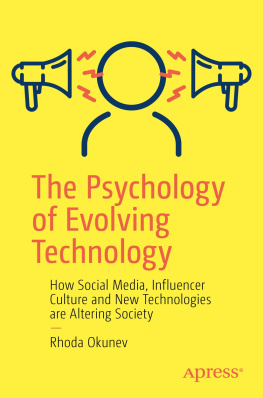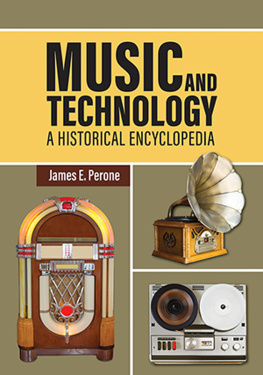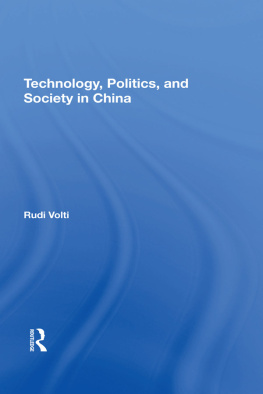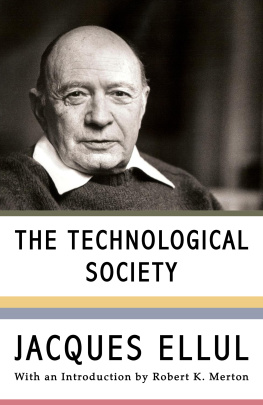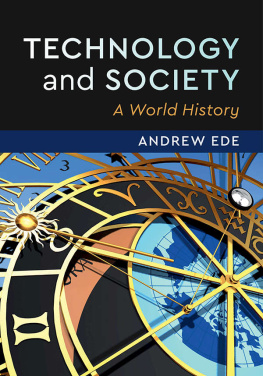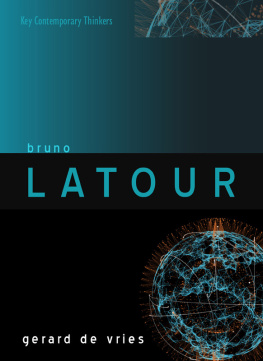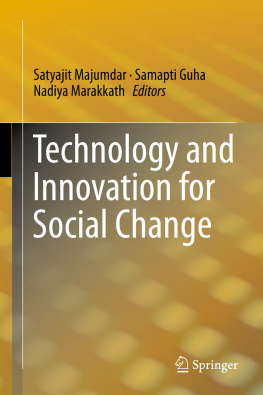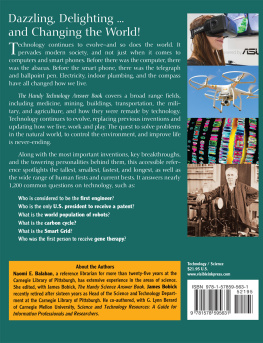Contents
Guide
Pagebreaks of the print version
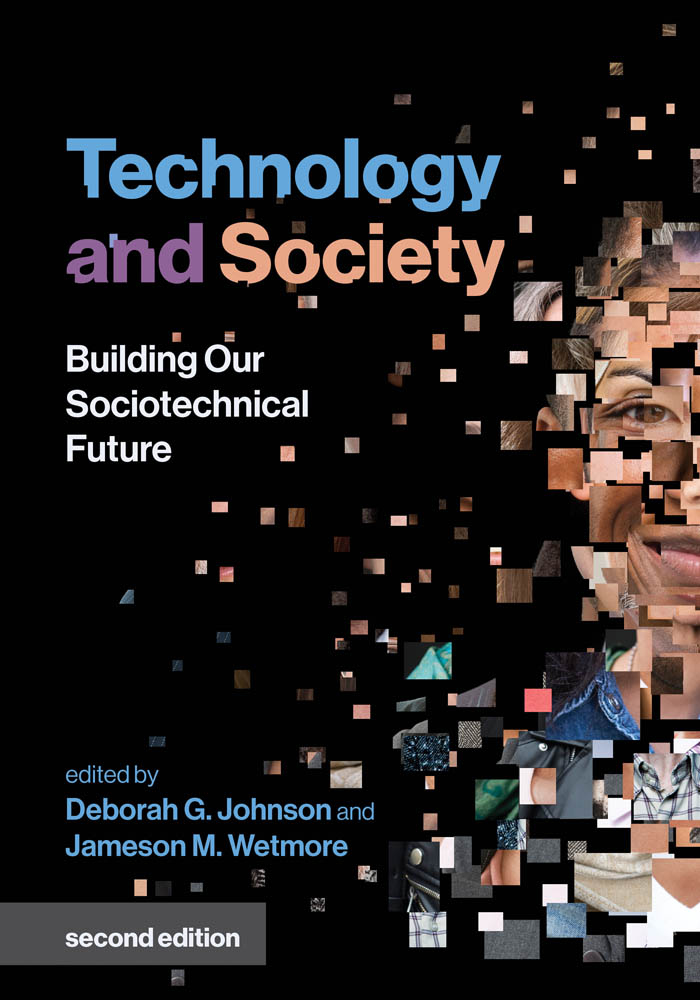
Inside Technology
edited by Wiebe E. Bijker, W. Bernard Carlson, and Trevor Pinch
A list of the books in this series appears at the .
TECHNOLOGY AND SOCIETY
Building Our Sociotechnical Future
Second Edition
edited by Deborah G. Johnson and Jameson M. Wetmore
The MIT Press
Cambridge, Massachusetts
London, England
2021 Massachusetts Institute of Technology
All rights reserved. No part of this book may be reproduced in any form by any electronic or mechanical means (including photocopying, recording, or information storage and retrieval) without permission in writing from the publisher.
Library of Congress Cataloging-in-Publication Data
Names: Johnson, Deborah G., 1945 editor. | Wetmore, Jameson M., editor.
Title: Technology and society : building our sociotechnical future / edited by Deborah G. Johnson and Jameson M. Wetmore.
Description: Second edition. | Cambridge, Massachusetts : The MIT Press, 2021. | Series: Inside technology | Includes bibliographical references and index.
Identifiers: LCCN 2020044373 | ISBN 9780262539968 (paperback)
Subjects: LCSH: TechnologySocial aspects. | Technological innovations. | Technology and civilization.
Classification: LCC T14.5 .T44169 2021 | DDC 303.48/3dc23
LC record available at https://lccn.loc.gov/2020044373
d_r0
Contents
- E. M. Forster
- Francis Fukuyama
- Stellan Welin
- David Willetts
- Bill Joy
- Rokeya Sakhawat Hossain
- Robert L. Heilbroner
- Trevor J. Pinch and Wiebe Bijker
- Thomas P. Hughes
- Bruno Latour
- Eulalia Prez Sedeo
- Langdon Winner
- George Ritzer
- Richard Dyer
- Rachel N. Weber
- Jameson M. Wetmore
- Rupak Chakravarty
- Maria Carmen Lemos and Lisa Dilling
- Dominique Vinck
- Charles Perrow
- Ashley Carse
- Raoni Guerra Lucas Rajo and Niall Hayes
- Andrew Smith
- Michael Moss
- Rena Bivens
- Art M. Blake
- Austin Choi-Fitzpatrick
- Eran Klein, Tim Brown, Matthew Sample, Anjali R. Truitt, and Sara Goering
- George Lucas
- Jack Stilgoe
- Alice Kaswan
- Clark A. Miller, Jennifer Richter, and Jason OLeary
- Felicia L. Montalvo
- Mar Hicks
- Gary Chapman
- David E. Nye
List of Figures
A six-stage model of the innovation process.
A multidirectional view of the developmental process of the Penny Farthing bicycle. The shaded area is filled in and magnified in . The hexagons symbolize artifacts.
A typical Penny Farthing, the Bayliss-Thomson Ordinary (1878). Photograph courtesy of the Trustees of the Science Museum, London.
The traditional quasi-linear view of the developmental process of the Penny Farthing bicycle. Solid lines indicate successful development, and dashed lines indicate failed development.
The American Star bicycle (1885). Photograph courtesy of the Trustees of the Science Museum, London.
Facile bicycle (1874). Photograph courtesy of the Trustees of the Science Museum, London.
A form of the Kangaroo bicycle (1878). Photograph courtesy of the Trustees of the Science Museum, London.
The relationship between an artifact and the relevant social groups.
The relationship between one social group and the perceived problems.
The relationship between one problem and its possible solutions.
Some relevant social groups, problems, and solutions in the developmental process of the Penny Farthing bicycle. Because of lack of space, not all artifacts, relevant social groups, problems, and solutions are shown.
A solution to the womens dressing problem with respect to the high-wheeled Ordinary. The solution obviously has technical and athletic aspects. Probably, the athletic aspects prevented the solution from stabilizing. The set-up character of the photograph suggests a rather limited practical use. Photograph courtesy of the Trustees of the Science Museum, London.
Lawsons Bicyclette (1879). Photograph courtesy of the Trustees of the Science Museum, London.
Whippet spring frame (1885). Photograph courtesy of the Trustees of the Science Museum, London.
Singer Xtraordinary bicycle (1878). Photograph courtesy of the Trustees of the Science Museum, London.
Geared Facile bicycle (1888). Photograph courtesy of the Trustees of the Science Museum, London.
The designers of the seat belt take on themselves and then shift back to the belt contradictory programs; the belt should be lenient and firm, easy to put on, and solidly fastened while ready to be unbuckled in a fraction of a second; it should be unobtrusive and strap in the whole body. The object does not reflect the social. It does more. It transcribes and displaces the contradictory interests of people and things.
Le Petit Bertrand is a mechanical meat roaster from the sixteenth century that ornaments the kitchen of the Hotel-Dieu de Beaune, the hospital where the author was born. The big handle (bottom right) is the one that allows the humans to wind up the mechanism; the small handle (top right) is made to allow a little nonhuman anthropomorphic character to move the whole spit. Although the movement is prescribed back by the mechanism, since the Petit Bertrand smiles and turns his head from left to right, it is believed that he is at the origin of the force. This secondary mechanismto whom is ascribed the origin of the forceis unrelated to the primary mechanism, which gathers a large-scale human, a handle, a stone, a crank, and a brake to regulate the movement.
Students of technology are wary of anthropomorphism that they see as a projection of human characters to mere mechanisms, but mechanisms to another morphism, a nonfigurative one that can also be applied to humans. The difference between action and behavior is not a primary, natural one.
Linguists define meaning as the intersection of a horizontal line of associationthe syntagmand a vertical line of substitutionthe paradigm. The touchstone in linguistics is the decision made by the competent speaker that a substitution (OR) or an association (AND) is grammatically correct in the language under consideration. For instance, the last sentence is incorrect.
The translation diagram allows one to map out the story of a script by following the two dimensions: AND, the association (the latitude, so to speak), and OR, the substitution (the longitude). The plot is defined by the line that separates the programs of action chosen for the analysis and the antiprograms. The point of the story is that it is impossible to move in the AND direction without paying the price of the OR dimensionthat is, renegotiating the sociotechnical assemblage.
The key, its usage, and its holder.



